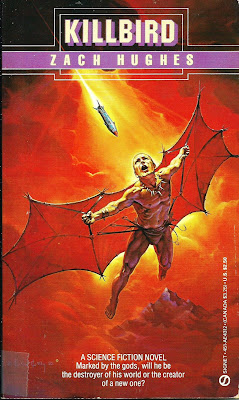Book Review: 'Amazon Planet' by Mack Reynolds
3 / 5 Stars
'Amazon Planet' (190 pp.) was published by Ace Books in 1975. The cover artist is not identified, but may be Robert Pepper.
This book falls within Reynolds' 'United Planets' series of novels, most of which feature the machinations of an intergalactic troubleshooting agency called 'Section G'.
As 'Amazon Planet' opens, our protagonist, a rather bland and diffident bureaucrat named Guy Thomas, is on assignment to the planet of Amazonia. His mission: negotiate with the Amazonian leadership for trade in valuable minerals and metals with select member states of the United Planets.
Circling the planet in the S.S. Schirra, the cargo ship that provided him transport, Thomas is regaled by the crew with stories of Amazonia's female-dominated society, one where men are little more than chattel and kept in a kind of 'male' purdah. When a team of Amazonians arrive aboard the Schirra to arrange for his transfer to the planet, they more than fulfill the stereotyped image of Amazonian warrior-women, and Thomas is warned to follow their every instruction lest he be kidnapped........and forced to endure a Fate Worse than Death.
Once on the ground, Thomas reveals he is not quite what he seems, and in fact possesses an ulterior motive: he is to clandestinely meet with a dissident group known as the Sons of Liberty. The Sons are made up of men who desire freedom and emancipation from the strictures of female rule, and they hope that the United Planets will support their cause.
Although Thomas finds the leaders of the Sons of Liberty to be underwhelming personalities, he agrees to plead their case to the United Planets. But it turns out the Amazonian leadership have their suspicions about Guy Thomas, and his real purpose for traveling to their planet, and they are quite comfortable with using any and all methods of interrogation to learn the truth behind his actions..........
Dallas McCord Reynolds, who used the pen name Mack Reynolds (1917 - 1983), was an author who wrote sci-fi to earn a living. During the nearly four decades (1950s - 1980s) he was active as a writer he published over 200 novels and short stories, some of these posthumously. Inevitably, some of this content was less than polished, and I have to assign 'Amazon Planet' to that category.
The narrative moves at a good pace, but in its later chapters takes on the character of a crime novel, as revelations about the true nature of society of Amazonia are paired with rather contrived action sequences that display an unimaginative attitude towards plot resolution. There are regular passages of a pedantic nature which illuminate Reynolds' stance on political theory and economics (such as, for example, the concept of basing an industrial society on the hour of labor, rather than currency, as a medium of exchange). I can't say I found these passages to be particularly engaging.
Summing up, 'Amazon Planet' is a workmanlike sci-fi adventure that stays comfortably within the boundaries of the genre as it stood in the mid-70s. I finished the book with no burning desire to pursue other Section G novels by Reynolds, although dedicated fans of his works may have a differing opinion.































































